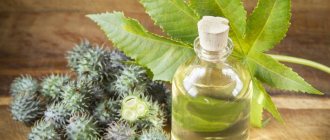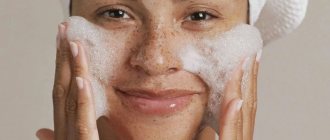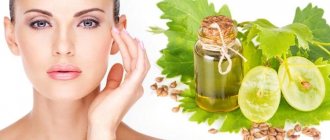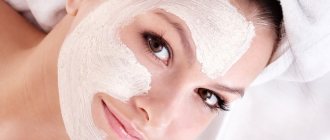Peptides
In biochemistry, peptides are usually called low-molecular-weight fragments of protein molecules, consisting of a small number of amino acid residues (from two to several dozen) connected in a chain by peptide bonds -C(O)NH-
According to an article published in the Journal of Cosmetic Dermatology Dermatology), peptides modulate or signal most natural processes in the body. In other words, they are information agents, “messengers” who carry information from one cell to another and interact with the endocrine, nervous and immune systems. Moreover, their activity manifests itself in very low concentrations (about 10 mol per liter), their denaturation is impossible (there is no tertiary structure), and synthetic peptides are also resistant to the destructive action of enzymes. This means that with a small amount of the administered drug, the peptides will perform their function for a long time and with high efficiency. Peptides have another important feature: their physical properties, toxicity, ability to penetrate the skin, effectiveness - all this is completely determined by the set and sequence of the amino acids they contain.
The role of peptides in the human body
All cells of the body constantly synthesize and maintain a certain, functionally necessary level of peptides. When a cell malfunction occurs, the biosynthesis of peptides (in the body as a whole or in its individual organs) is disrupted—either enhanced or weakened. Such fluctuations occur, for example, in a state of pre-illness and/or illness - when the body includes increased protection against disruption of the functional balance. Thus, to normalize processes, it is necessary to introduce peptides, due to which the body turns on a self-healing mechanism. A clear example of this is the use of insulin (a peptide hormone) in the treatment of diabetes.
The biological effects of peptides are varied. To synthesize peptides, our body uses only the 20 most common amino acids in nature. The same amino acids are present in peptides with different structures and functions. The individuality of a peptide is determined by the order of alternation of amino acids in it. Amino acids can be considered as letters of the alphabet, with the help of which, as in a word, information is written. A word carries information, for example, about an object, and the sequence of amino acids in a peptide carries information about the construction of the spatial structure and function of this peptide. Any, even minor changes (changes in the sequence and number of amino acids) in the amino acid composition of peptides often lead to the loss of some and the emergence of other biological properties. Thus, based on information about the biological functions of peptides, seeing the composition and specific sequence of amino acids, we can say with great confidence what the direction of its action will be. In other words, a different peptide is suitable for each type of tissue: for the liver - hepatic, for the skin - cutaneous, peptides of immunological action protect the body from toxins that have entered it, and so on.
Among the currently existing peptides, regulatory peptides (low molecular weight oligopeptides) play a special role in the human body. This is one of the most important systems for regulating and maintaining “homeostasis”. This term, introduced in the 30s of the last century by the American physiologist W. Cannon, means the vital balance of all organs. According to scientists, the most valuable among regulatory peptides are short peptides with no more than 4 amino acids per molecule. Their value is determined by the fact that they do not form antibodies and are therefore absolutely safe for health when used as medicines.
The mechanism of action of bioregulatory peptides on the cell
Regulatory peptides are one of the types of informons (specialized substances that transfer information between the cells of the body). They are metabolic products and constitute a large group of intercellular signaling devices. They are multifunctional, but each of them is highly specific to certain receptors, and they are also able to regulate the formation of other regulatory peptides.
Regulatory peptides have a direct effect on the ratio of dividing, maturing, functioning and dying cells; in mature cells, peptides support the necessary set of enzymes and receptors, increase survival and reduce the rate of cell apoptosis. In fact, they create the optimal physiological rate of cell division. Thus, an important difference between these peptides is their regulatory effect: when the cell function is suppressed, they stimulate it, and when the function is increased, they reduce it to a normal level. Based on this, preparations made on the basis of peptides carry out physiological correction of body functions and are recommended for cell rejuvenation.
Peptides in anti-age cosmetology
Since peptides, in addition to their main functions, take an active part in the control of inflammation, melanogenesis and in the synthesis of proteins in the skin, their use in cosmetology, in our opinion, is an indisputable fact. Let's look at this with specific examples.
Carnosine dipeptide is an antioxidant peptide (discovered in 1900).
- It is part of the body's natural antioxidant system. It is able to neutralize free radicals and bind metal ions, thereby protecting cell lipids from oxidative effects. In cosmetic preparations it functions as a water-soluble antioxidant.
- Accelerates wound healing and controls the process of inflammation. Thanks to its action, wounds heal “high quality”, without scars. These properties of carnosine are actively used in cosmetic preparations, the action of which is aimed at solving the problems of damaged and inflamed skin (for example, in the treatment of acne), intended for rehabilitation after traumatic procedures (fractional ablative photothermolysis, peelings, etc.).
- It is an effective proton buffer, which can be used in acid peeling products. By adding carnosine, you can not reduce the acid concentration (and therefore maintain the effectiveness of the product) and at the same time increase the pH, making the peeling less irritating.
Matrikines - peptides with lifting effect
- They are formed when the structural proteins of the dermal matrix (collagen, elastin and fibronectin) are destroyed during the natural cleansing of the wound before it begins to heal.
- They are autocrine and paracrine peptides for instant exchange of messages between cells and tissues, thereby triggering and regulating the sequence of all stages of the wound healing process. In other words, they signal fibroblasts about the destruction of collagen, elastin, fibronectin, as a result of which fibroblasts begin to synthesize new proteins to replace the destroyed ones. It is very important that these processes occur not only during skin damage, but also during its natural renewal.
Copper-containing tripeptide (GHK-Cu) is a peptide that regulates skin remodeling (reconstruction).
- Stimulates collagen synthesis in the skin.
- Accelerates the process of wound healing and scar treatment:
- increases the level of antioxidants in the wound, binds some toxic products of lipid peroxidation, limits undesirable manifestations of inflammatory reactions, thereby protecting cells from oxidative stress and preventing their damage;
- stimulates fibroblasts to produce components of the extracellular matrix of the skin, and other cells to form blood vessels in the damaged area;
- has anti-inflammatory activity.
- Helps skin cells better “communicate” with each other, exchanging signaling molecules.
- Stimulates the synthesis of moisture-retaining molecules of the dermis - glycosaminoglycans.
- Regulates skin remodeling (reconstruction) by activating the activity of enzymes that destroy the skin matrix and substances that inhibit these enzymes.
- When used in combination with methods of controlled skin damage (peelings, fractional ablative photothermolysis, etc.), it activates the natural processes of its restoration and remodeling, and also reduces the risk of side effects.
- Synthetic peptides can be shorter (fewer amino acids in the chain) compared to natural analogues. But at the same time retain their characteristic properties and effectiveness. And the smaller the peptide molecule, the easier it is to penetrate the stratum corneum of the skin and the more narrowly targeted its action will be with the absence of unwanted systemic effects.
- Many synthetic peptides, unlike their natural analogues, contain a fatty acid residue, due to which they become lipophilic and easily pass through the lipid barrier of the skin, penetrating into its deep layers.
- Synthetic peptides are more resistant to the destructive effects of peptidases. This means that they will last longer.
- Synthetic peptides have a clearly defined recipe, meaning there is no need to go through combinations of amino acids blindly. It is enough to purposefully use a peptide with an already specified biological activity.
Peptides of natural origin have their synthetic analogues, which are now being actively introduced into the practice of cosmetologists. What is their advantage?
What are peptides
They are made up of amino acids. They are used in cosmetics due to their increased stability in the composition of products, and also because of their ability to penetrate into the deep layers of the skin. Considering the size and structure, cosmetics with this component will be more effective than the sensational products with elastin and collagen. Penetrating the skin, they connect with cellular receptors, which perceive them as a signal for action. They dictate to the cells what to do - divide, die. It is important to understand that the actions of peptides vary depending on the group. There are 4 types used in cosmetics: signaling, transport, enzyme inhibitors and neurotransmitters. Signal signals stimulate the production of collagen and elastin. The well-known Matrixyl belongs to this group. Transport cells act as a “carrier” and deliver essential microelements to cells. Enzyme inhibitors increase the lifespan of collagen. Neurotransmitters relax muscles because one of the most famous peptides, botoluxin, works.
pros
- Light weight and ability to penetrate the skin. This allows them to act in the deepest layers of the epidermis, which means cosmetics will give results faster.
- They are safe. The components have no toxic effect, do not cause allergies or addiction. It is almost impossible to overdo them.
- Almost instant results.
Minuses
- They do not accumulate in the body, so you need to use products with this component regularly.
- In some cases, cosmetics may be useless.
- The reason for this is not the composition at all, but various factors, for example, the characteristics of the body, obstacles to the penetration of ingredients inside.
- The body independently regulates their quantity.
- You think that the products should definitely work and make you younger, but the body may think otherwise and remove everything that you use so diligently.
Is it dangerous to use?
All fears are most often associated with myths based on the origin and mechanism of action of the component. Peptides are the active part of growth factors, and this phrase sounds threatening. It is believed that growth factors stimulate cell division and can cause various formations. There is a fear of using cosmetics with peptides - suddenly your face will swim or a tumor will form.
But their peptides are associated with balancing and fine-tuning the functioning of cells and cannot harm the body. These signaling molecules force the body's cells to produce the correct healthy product, cleanse the intercellular space and improve the environment around them, and accordingly their work. Our body is designed in such a way that it takes only the amount of peptides it needs for recovery, and the excess breaks down and is excreted.
Skin aging processes and principles of their correction using peptides
Skin aging is a natural, genetically programmed process that is based on biological changes at the cellular level. At the same time, you and I know that the process of skin aging, in addition to genetics, is greatly influenced by a number of other factors: lifestyle and nutrition, stress, environmental factors, ultraviolet radiation, concomitant diseases, etc. And no matter what factors will act as a “trigger” for the aging process; in the skin they will proceed approximately according to the same scenario. Namely: a change in the number of functioning cells, a decrease in their activity and, as a consequence, a decrease in peptide synthesis, disruption of metabolic processes, a decrease in the sensitivity of the cell’s receptor apparatus, changes in the composition and structure of the intercellular matrix, etc. For example, at the age of 55, the number of peptides decreases 10 times compared to 20 years ago.
Today in anti-age cosmetology there are two approaches to influence this scenario: the first is the introduction of new healthy young cells (fibroblasts, stem cells) - difficult and expensive, and the second is the use of factors that normalize the functions of existing cells, regulatory peptides (cytokines), which, in our opinion, most physiologically stimulate mechanisms that are suppressed with age.
Peptides and extracellular matrix
Peptides stimulate youth cells - fibroblasts to produce components of the extracellular matrix of the skin (collagen and elastin fibers, hyaluronic acid, fibronectin, glycosaminoglycans, etc.). It is the matrix that plays a key role in maintaining skin firmness and elasticity.
The main peptides that solve the problems of the “aging” damaged matrix are:
- Copper-containing tripeptide (GHK-Cu). Moreover, this peptide not only stimulates the synthesis of new proteins of the intercellular matrix, it also activates the destruction of large collagen aggregates that disrupt the normal structure of the matrix. In total, all these processes lead to the restoration of the normal structure of the skin, improving its elasticity and appearance. This peptide is also called a stabilizer of the skin’s own protective potential at all levels. Its synthetic equivalent is Prezatide Copper Acetate.
- Matrikines are stimulators of the synthesis of dermal components. Its synthetic analogue is matrixyl (Palmitoyl Pentapeptide-3). It activates the synthesis of type 1,4,7 collagen.
- Deraxil (Palmitoyl Oligopeptide) - stimulates elastin synthesis.
Peptides and photoaging
UVA radiation is the main cause of photoaging. It is this that can lead to the oxidation of melanin and skin lipids into toxic products with the production of free radicals. This is where peptides with antioxidant effects come to the aid of the skin. One of them is the above dipeptide carnosine.
Peptides and skin pigmentation disorders
The main cause of skin pigmentation disorders is a failure in the synthesis and breakdown of melanin, i.e. disruption of the process of melanogenesis. According to recent studies, the leading role in its regulation is played by melanocyte-stimulating hormone (a peptide in nature), which is produced directly by keratinocytes of the epidermis. This peptide hormone enhances skin pigmentation under the influence of ultraviolet radiation, thereby protecting the skin from the damaging effects of free radicals. But when a malfunction occurs in the process of melanogenesis, the same peptide hormone can contribute to the appearance of hyperpigmentation. In other words, peptides, together with skin cells, represent a “skin analogue” of the hypothalamic-pituitary system, which implements a mechanism for regulating melanogenesis at the local level. It is also known that peptide conjugates can enhance the effectiveness of non-peptide substances that block melanogenesis. For example, adding a tripeptide to kojic acid increases its inhibitory effect on the enzyme tyrosinase by 100 times.
Today, synthetic peptides have been developed and are actively used in cosmetology to correct skin pigmentation disorders. They are called regulators of melanogenesis.
- Peptides are melanol-stimulating hormone agonists. They activate receptors for MSH. They enhance the production of pigment under the influence of ultraviolet radiation, but at the same time reduce the production of inflammatory mediators: melitime (Palmitoyl Tripeptide 30), melitan (Acetyl Hexapeptide-1).
- Peptides - antagonists of melanostimulating hormone - interfere with the synthesis of melanin: melanostatin (Nonapeptide-1).
Peptides and disorders of the protective function of the skin
Peptides play a key role in regulating the protective immune response of the skin in response to exposure to substances of bacterial, viral and fungal origin. They are able to influence all stages of inflammation, which is triggered as a universal defense mechanism in case of skin damage of any origin. For example, beta-defensins are polypeptides that are produced by keratinocytes in response to the stimulating effect of bacterial “agents”. In this case, the main work of peptides is to accelerate wound healing processes by enhancing the migration and proliferation of keratinocytes to the site of damage. Insufficient production of beta-defensins makes the skin vulnerable to infections, for example in people suffering from atopic dermatitis and acne.
Synthetic analogs of peptides that regulate the ratio of pro- and anti-inflammatory cytokines (immunomodulators) are:
- Rigin (Palmitoyl Tetrapeptide-7) – reduces the production of the pro-inflammatory mediator interleukin-6 by basal keratinocytes.
- Thymulen (Acetyl Tetrapeptide-2) is a biomimetic (an analogue of the thymus gland peptide thymopoietin), compensates for the natural age-related loss of T-lymphocytes - improves skin immunity, improves the regeneration of epidermal structures.
Peptide-stabilizer of the skin’s own protective potential at all levels:
Peptamide-6 (Hexapeptide-11) is a peptide isolated from the enzymatic lysate of Saccharomyces yeast (an analogue of B-glucan) – an activator of macrophages (increasing the ability to ingest foreign bodies, production of cytokines leading to activation of lymphocytes, release of growth factors - epidermal and angiogenesis).
Peptides and expression lines
Today, modern cosmetology actively uses drugs containing botulinum toxin type A to correct facial wrinkles. The mechanism of action and effectiveness of which have been well studied and described in detail in the world literature. Also in the literature, cases are described when we are talking about individual primary (noted in 0.001% of cases in women and in 4% of cases in men) or secondary insensitivity to botulinum toxin type A. Moreover, there is also a list of contraindications to drugs containing botulinum toxin type A. In all these situations, it is advisable to use peptides - blockers of muscle contractions.
The first cosmetic “analog” of botulinum toxin was the hexapeptide Argireline® (Lipotec), which is a sequence of six amino acids. It also prevents the release of the mediator from the nerve ending and reduces the depth of wrinkles, however, the molecular mechanism of its action is different from that of botulinum toxin. Its amino acid sequence is much shorter than that of botulinum toxin A, which means it penetrates the skin more easily and is suitable for cutaneous application. Later, other synthetic peptides appeared that block the transmission of impulses from the nerve ending to the muscle. For example, SNAP - 8 (Acetil Octapeptide - 3) - act at the level of the presynaptic membrane, competitively binding to transmembrane proteins, limiting the entry of acetidcholine into the synaptic cleft.
Peptides “with a Botox effect” have been used in cosmetics for several years, so quite a lot of observations on their use have been accumulated. They work best at smoothing out facial wrinkles around the eyes; as for deep wrinkles on the forehead and nasolabial folds, the results are worse in these areas.
It should be remembered that peptides “with a Botox effect” cannot help in the fight against wrinkles that arise due to sagging and dry skin. Here we need substances that restore and renew the structure of aging skin tissue.
Peptides and scarring of the skin
Scarred skin lesions, regardless of their location, cause great discomfort to their owner. Therefore, it is very important to develop competent tactics for managing a wound from the moment it occurs. Regardless of what caused the violation of the integrity of the skin (acne, trauma, etc.), the wound healing process goes through standard stages with the obligatory participation of endogenous peptides. Knowing this, we can actively use the following peptides:
- Copper-containing tripeptide (GHK-Cu) is a peptide that regulates skin remodeling (reconstruction). Its synthetic analogue is Prezatide Copper Acetate E.
- Matrikines are stimulators of the synthesis of dermal components. Their synthetic analogue is matrixyl (Palmitoyl Pentapeptide-3).
- Carnosine dipeptide is an antioxidant peptide. Launches and regulates the sequence of all stages of wound healing.
In our opinion, these peptides can be used from 10 to 12 days after skin damage.
Procedures for combined correction of age-related skin changes using peptides
Since April 2014, doctors at our medical center have been actively using the Le Mieux produced by Bielle Cosmetics Inc USA when developing and carrying out anti-age complexes. The main distinguishing feature of this cosmetics is the peculiarity of its formula. Instead of traditional glycerin and water, the basis of these preparations is hyaluronic acid . In addition, the composition includes the above-mentioned synthetic peptides, as well as natural components. Moreover, all active ingredients are contained in highly effective concentrations . This composition allows you to widely use this line to obtain positive results in a fairly short time.
Protocol for the use of peptides with DOT/DROT therapy
The action of DOT/DROT (SmartXide DOT2, Deka, Italy) therapy is based on the vaporization of micro-areas of the skin with a laser beam (CO2 laser). The biostimulating effect of the laser and the natural reaction of the skin to damage triggers a cascade of restoration processes at the tissue and cellular level; of course, endogenous peptides also take an active part in this process. Le Mieux cosmetics allow you to regulate the processes of aseptic inflammation that arise in response to the effects of a fractional ablative laser.
Procedure steps:
- Application anesthesia.
- DOT or DROT therapy.
- The final stage - immediately after the procedure, the laser treatment area is treated with Serum * EGF-DNA (epidermal growth factor) Le Mieux Composition: 53 amino acids, which are responsible for interacting with epidermal receptors and triggering reactions, as a result of which the regeneration processes are accelerated. And as a result, a decrease in clinical manifestations characteristic of the fractional ablative laser procedure (burning, pain, hyperemia, swelling).
- Home care.
For 10-12 days after the procedure, Serum*Collagen Peptide Le Mieux is applied twice a day, which includes matrixyl, a peptide that stimulates the synthesis of dermal components, and thymulen (Acetyl Tetrapeptide-2), a peptide that stimulates skin immunity, improves the regeneration of epidermal structures. As a result, the production of extracellular matrix components is enhanced, which helps reduce the duration of the rehabilitation period.
2 weeks after the procedure - Moisturizing cream*Essence from Le Mieux.
Our clinical observations have shown that the combination of Le Mieux cosmetics with DOT/DROT for the purpose of correcting age-related skin changes can reduce the clinical manifestations (burning, pain, hyperemia, swelling) characteristic of the fractional ablative laser procedure and shorten the duration of the rehabilitation period.
A fashionable component is peptides. The mechanism of their work
Peptides (Greek πεπτος “nutritional”) are a family of substances whose molecules are built from two or more amino acid residues connected in a chain by peptide (amide) bonds. They were first isolated from protein hydrolysates at the beginning of the twentieth century, but now more than a thousand types of these substances are known, their properties have been determined, and synthesis methods have been developed.
Peptides are also called information agents because they “transfer” information from cell to cell by activating certain sections of DNA.
Amino acids are the basic building blocks of all living organisms. Their compounds are called either peptides or proteins. The difference between them is the length of the chain: a molecule with less than 50 amino acids is a peptide, and more is a protein.
Peptides are found in small quantities in almost all living cells. These substances are already contained in the skin and are produced naturally. Hormones and components of blood plasma are also them. They seem to build and organize internal processes: the cells “recognize” what is happening to the epidermis and issue the appropriate commands. Changes in peptide synthesis indicate some changes and action must be taken. Since peptides, a building material, when synthesized incorrectly, tissues gradually lose density and elasticity.
At the moment, peptides are one of the most popular ingredients that are used in all branches of medicine. The fashion for them overtakes us everywhere: food supplements, medicines, cosmetics, injections. Why are scientists and manufacturers of such products sure that peptides are necessary to maintain beauty and health?
There are different types of peptides in our body, the main ones are:
- hormonal - hormones produced by the thyroid gland, pancreas and pituitary gland - affect the rate of cell renewal;
- immunological - perform a protective function, fight toxic substances;
- neuropeptides - control and regulate physiological processes;
- bioregulators - regulate biological processes: appetite, hormonal activity.
Peptides in aesthetic medicine.
Each specialist has a personal top list of favorite drugs and care products, among them there are always those containing peptides, as a rule, these are anti-aging products.
According to recent scientific research, there are more than one and a half thousand types of peptides. Not all are used in cosmetology.
Popular types:
Signal peptides (“messengers” reporting problems in the system) are peptides that stimulate skin cells to produce collagen, elastin and other proteins for its firmness and elasticity. They are initially present in our skin: when the life cycle of a collagen molecule ends, the signal peptide informs the body about this, and it synthesizes a new molecule. Palmitoyl Tripeptide-3/ Matrixyl, Palmitoyl Oligopeptide/ Dermaxyl.
Stimulating peptides help to properly “assemble” collagen fibers, restoring the boundary between the stratum corneum and the dermis through the synthesis of collagen and syndecan. They tighten thin skin and help eliminate hypersensitivity. Acetyl Tripeptide-11/ Syn-Orage.
Peptides - stabilizers - restore skin that suffers from excessive exposure to ultraviolet rays, smoking and stress. Prezatide Copper Acetate.
Transport peptides - deliver various microelements to skin cells. Example of use: delivery of manganese, which has a disinfecting and healing effect, or copper ions necessary for collagen synthesis.
Pigmenting peptides - activate the process of melanin production. Palmitoyl Tripeptide-30/Melatime.
Enzyme inhibitors are a type of peptide that inhibits collagen-degrading enzymes, thereby increasing the lifespan of collagen. This is how silk extract, soy protein (or peptide) and rice peptide work.
Immune peptides are antioxidants that help in the functioning of the immune system and strengthen it, protecting collagen and elastin fibers from destruction. For example, the dipeptide carnosine is used in the treatment of inflamed skin, acne, as well as after peelings and other traumatic procedures. It neutralizes free radicals and metal ions, accelerates regeneration and promotes healing. Palmitoyl Tetrapeptide-3/ Rigin.
Neurotransmitters (muscle relaxant peptides) - relax muscles. They act on the principle of botulinum toxin: they block the transmission of nerve impulses to the muscle and thereby smooth out facial wrinkles. Acetyl Hexapeptide-3/ Argireline.
Remodeling peptides - resume the “correct” process of collagen fiber assembly, increasing skin firmness and elasticity. Acetyl Tripeptide-9/ Dermican.
There are other types of peptides. About 50 are used for cosmetic purposes.
Main functions and features of peptides:
- activation of restoration and regeneration processes in skin cells, acceleration of the synthesis of collagen, elastin, hyaluronic acid and glycosaminoglycans, which makes the skin more elastic, plastic, and its relief is evened out.
- Neutralizes free radicals, regulates, enhances and strengthens skin immunity.
- Healing wounds and eliminating inflammation, accelerating regenerative processes.
- Peptides are considered the most effective means of combating even skin defects such as scars, if treatment is started no later than two weeks from the date of scar formation.
- Stabilizes cell restoration processes. Replacing old, dysfunctional cells.
- They activate the work of fibroblast cells, which are responsible for the synthesis of collagen and suppress the action of enzymes that destroy it.
- They compact the structure of the epidermis and normalize cellular metabolism.
- even out complexion, remove sagging and dark circles under the eyes;
- Improve microcirculation, strengthen the walls of blood vessels and capillaries;
- Eliminate pigmentation and help get rid of deep wrinkles and prevent the appearance of new ones.
- Regulate the functioning of the sebaceous glands, relieve inflammation and help eliminate sensitivity.
- The use of peptide cosmetics at a young age can help postpone the use of “heavy artillery” in cosmetology - facelift, botulinum toxin injections, etc.
- Superpower: quickly and deeply penetrate the layers of the dermis without causing any harm. No injections are required to deliver peptides to the body. Even as part of a cream, they are able to penetrate the horny barrier of the dermis and perform their functions.
- Safety. Any peptides are a chain of several amino acids; subsequently, all natural proteins in our body are built from them. They can be considered “friendly” components for the health of our skin. Currently, synthetic peptides are used in cosmetology, which significantly reduces the risk of allergic reactions in the patient. But it is impossible to completely exclude reactions to drugs with peptides, since they are multicomponent.
This multifunctionality is possible due to the high biological activity and low molecular weight of the peptides. They act both on the surface of the epidermis and penetrate into the deeper layers of the skin, combining with conductive components.
Peptides used in cosmetology are created by artificial synthesis, and rarely by protein breakdown. The most popular synthetic peptides are Argireline and Matrixyl.
What determines the effectiveness of peptides?
- Of course, a very correctly selected product according to your skin type, indications and its proper use will have an impact on the appearance of a positive result.
- The effectiveness of the product will depend on the composition of the formula, for example, if the product contains hyaluronic acid and vitamin C - these are peptide conductors. ANA acids and retinoids, on the contrary, weaken the functions of peptides.
- The percentage of peptides, their properties and the length of the peptide chain will play an important role.
- It is necessary to store care products with peptides in a dark place where direct sunlight does not penetrate. As a rule, the manufacturer indicates on the packaging storage requirements and expiration date after opening the package.
- Also, it should be taken into account that peptides have a cumulative effect, that is, visible results after using such products will be noticeable over time or after a course of procedures, if these are injectable drugs.
Peptides are amazing, active components that have many positive effects on our body, supporting the functioning of cellular systems. Therefore, they are used in various fields of medicine and are able to influence many problems in aesthetic cosmetology, combining a lot of functions: moisturize, level, smooth, serve as antioxidants, and even practically an analogue of botulinum toxin, etc.
Sources: https://www.lofficielrussia.ru/, https://www.letoile.ru/, https://www.kiz.ru/content/, https://tsn.ua/.
Educational phone numbers : 8-812-248-99-34, 8-812-248-99-38, 8-812-243-91-63, 8-929-105-68-44
Application for ordering products here
Seminar schedule here
conclusions
Peptides are an integral component of all life processes occurring in the human body.
Peptide therapy
Peptide therapy is the latest achievement in skin rejuvenation in injection cosmetology. The unique cosmetic procedure is based on the use of peptide complexes, which are natural bioregulators of the human body. Today, peptide therapy has become widespread, and the popularity of this procedure is increasing every day.
How does peptide therapy differ from conventional biorevitalization?
The use of peptides is a new word in biorevitalization; the main difference compared to traditional procedures is the compositions used and, accordingly, the effect on the body.
In conventional biorevitalation, gels based on hyaluronic acid are used, which contain vitamins, various microelements and coenzymes. In peptide therapy, the main dermomodulator in combination with hyaluronic acid are peptides and amino acids.
Why peptides and how do they affect the skin?
Peptides are very short complexes of amino acids. They serve to transport information between cells.
Once in the skin, the peptide triggers a natural cascade of cell renewal and restoration of their biological functions.
Artificially synthesized peptides have a protective effect at the cellular and molecular levels. Peptides protect the skin from the effects of toxic substances and radiation and prevent oxygen starvation. They participate in regenerative processes, remove decay products and toxins. Amino acids accelerate cellular metabolism and turn on the rejuvenation mechanism. The structure of peptide molecules is such that they penetrate not only deep into the tissue, but also into the cell. Protein complexes influence biochemical processes in the skin. Peptides help saturate the dermis with nutrients and restore its functions.
Scientists have proven that the aging process of the skin is primarily associated with the fact that the tissue activity of bioregulatory peptide complexes and amino acids decreases over time. After 35 years, in adults, metabolic processes gradually slow down or become completely distorted.
Peptide therapy is aimed at replenishing this deficiency and regulating cellular reactions.
Who is peptide therapy indicated for?
Peptide therapy is indicated for patients over 35 years of age and is used for rejuvenation and regeneration of mature skin with such severe problems as:
- Dry and dehydrated skin;
- Large and small wrinkles;
- Loss of tone and elasticity;
- Gravitational ptosis 1-3 degrees;
- Pigmentation;
- Dull complexion;
- Cuperosis;
- Acne stage 1 (beyond exacerbation);
- Rosacea;
- Increased skin sensitivity;
- The presence of small defects on the skin;
Peptide therapy is excellent for skin restoration after aggressive cosmetic procedures. A unique technique allows you to solve various aesthetic problems and significantly increase the effectiveness of medium and deep peels, laser resurfacing, dermabrasion, thread lifting and other procedures. Today, peptide therapy is known as an effective anti-age therapy!
What results can you expect?
The positive characteristics of the action of peptides in comparison with proteins and hormonal drugs make it possible to achieve the following results:
- Skin moisturizing;
- Lifting effect;
- Restoring skin tone;
- Stimulating the production of elastin and collagen;
- Removing facial swelling;
- Botox effect (some peptides have the effect of muscle relaxants);
- Blocking the activity of the sebaceous glands;
- Reducing the severity of pigmentation;
- Elimination of small scars and minor defects;
- Reducing the number of facial wrinkles;
- Acceleration of functional restoration and tissue regeneration;
- Improving the appearance of the skin;
- Acceleration of metabolic processes;
How is the procedure performed?
Before starting the procedure, the cosmetologist performs “makeup removal,” cleanses the patient’s skin of external impurities, and treats the skin with a 0.05% chlorhexidine solution. For the patient’s comfort during the procedure, an anesthetic cream is applied to the skin.
To administer the peptide therapy drug, the cosmetologist uses a needle of a special diameter, which leads to the correct distribution of the drug inside the skin. On the skin of the face and body, the drug is administered by multiple intradermal microinjections using the “microbubercle” technique; in the periorbital zone, it is possible to use the “micropapule” technique.
The choice of the most suitable preparation with peptides is made by a cosmetologist based on the patient’s individual indicators: age, gender, degree of hydration of his skin, the presence of acne, scar changes, age spots, etc.
How is recovery after injections?
After completing the peptide therapy procedure, a cream with a soothing effect is applied to the skin, which helps micropapules quickly resolve. Within half an hour they significantly decrease in size and then subside, and the patient, after visiting a cosmetologist, can return to his usual activities and work. The anti-aging effect will be noticeable almost immediately after peptide therapy. Facial skin becomes fresh and radiant. To obtain the lasting desired result of peptide therapy, 3-4 procedures with a two-week break between them are usually sufficient.
After peptide biorevitalization, slight swelling may occur, which disappears on its own within a day.
It is not recommended to apply makeup for 1 day after the procedure; for 2 weeks you must avoid visiting the pool, bathhouse, sauna and heavy physical activity.
Contraindications
- Age under 18 years;
- Pregnancy and lactation;
- Individual intolerance to one or more components of the drug;
- Oncopathology;
- Autoimmune diseases;
- Diabetes;
- Obesity;
- Infectious processes occurring in the body;
Questions and answers
When will it be possible to lead an active lifestyle after peptide therapy?
Peptide therapy does not require rehabilitation, so you can get back to your business immediately after the procedure. You should avoid wearing makeup for 24 hours, and avoid using a solarium and swimming pool for two weeks. These measures are necessary for the drug to work properly.
Is peptide therapy allowed for acne?
Peptidotherapy works best with the consequences of acne - scars and spots. It makes sense to treat the exacerbation, and use peptide therapy as a method of combating post-acne.
How quickly does peptide therapy rejuvenate skin?
The visible effect occurs immediately after the session. The skin seems to wake up, becoming smooth and radiant. But the most important effect of peptide therapy is the long-term activation of the renewal of cellular structures in both the epidermis and dermis.
How painful is peptide therapy?
To make the injections comfortable for you, a cream with an anesthetic effect is applied a few minutes before the operation. The procedure will take place in a comfortable environment for you, without pain.
How many procedures do you need to undergo for the best result?
The optimal number of peptide therapy sessions is 3-4 with a two-week interval.
Leave feedback
The procedure is carried out
Davtyan Ekaterina Viktorovna
Candidate of Medical Sciences, dermatovenerologist, cosmetologist, trichologist category 2
Sign up
Spirova Aksana Georgievna
dermatologist, cosmetologist
Sign up
make an appointment
Price list
Consultation with a cosmetologist (skin diagnostics using the Vectra XT 3D device, drawing up an individual rejuvenation program, individual prescriptions. Consultation duration 60 minutes)
2 000 ₽
Sign up
Consultation with a cosmetologist with the procedure on the same day
0 ₽
The prices indicated on the website are not a public offer (Article 435 of the Civil Code of the Russian Federation, Article 437 of the Civil Code of the Russian Federation). To clarify the cost of services, please call











